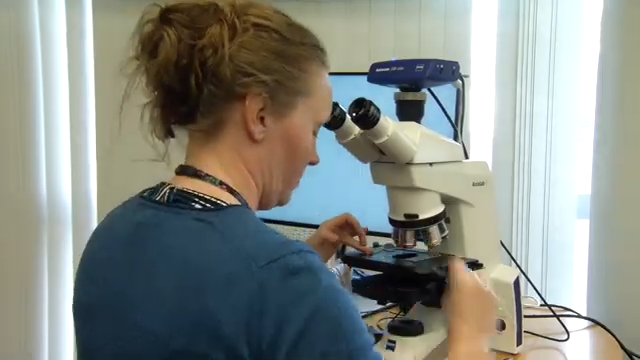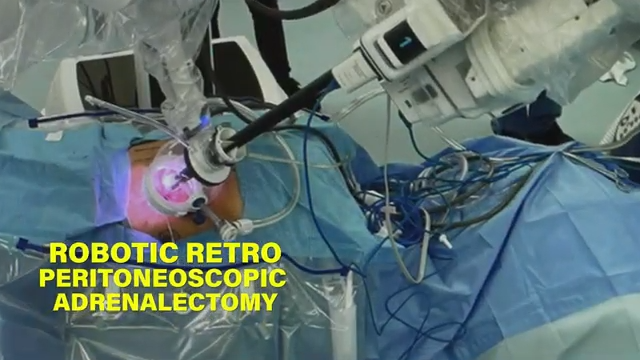LOS ANGELES, Calif. (Ivanhoe Newswire) – Each year, more than 795,000 people in the United States suffer strokes. Every three and a half minutes someone dies from one. Getting treated quickly is vital for survival and for a better recovery. Now, doctors are using artificial intelligence to diagnose strokes quicker than ever before.
Every 40 seconds, someone in the U.S. has a stroke. Fifty percent of patients who have one are left disabled for life. The mantra in stroke treatment is time is brain.
Neuroradiologists at University of California, Irvine are studying how artificial intelligence and machine learning can detect strokes quicker than ever before.
“Our goal of this research is to actually, hopefully, improve door-to-treatment times by expediting the diagnoses,” neuroradiologist at UCI Health, Dr. Jennifer Soun, MD, explains to Ivanhoe.
AI uses machine learning, instantly comparing a CAT scan, or brain image, of someone in the ER with images of tens of thousands of previous stroke patients.
Dr. Soun says, “These AI tools actually help us by triaging the cases that might demand urgent attention or the positive cases that should go to stroke treatment.”
And just as important as diagnosing a stroke, machine learning will soon be able to rule out problems that mimic a stroke, and it will all be done with an app on the radiologist’s cell phone.
“It can deliver results within seconds,” Dr. Soun adds.
The latest studies also show knowing the early signs of a stroke such as loss of balance, facial paralysis, weakness, and loss of speech, could also help save your life. That’s because patients who arrive at the emergency room within three hours of their first symptoms often have less disability three months after a stroke than those who receive delayed care.
Contributors to this news report include: Marsha Lewis, Producer; Correa, Videographer & Editor.
To receive a free weekly e-mail on medical breakthroughs from Ivanhoe, sign up at: http://www.ivanhoe.com/ftk
Source:
https://www.cdc.gov/stroke/facts.htm
MEDICAL BREAKTHROUGHS
RESEARCH SUMMARY
TOPIC: MACHINE LEARNING DIAGNOSES STROKES QUICKER
REPORT: MB #5139
BACKGROUND: A stroke occurs when something blocks blood supply to part of the brain or when a blood vessel in the brain bursts. In either case, parts of the brain become damaged or die. A stroke can cause lasting brain damage, long-term disability, or even death. Every year, more than 795,000 people in the United States have a stroke. About 610,000 of these are first or new strokes and every 40 seconds, someone in the United States has a stroke. Every 3.5 minutes, someone dies of stroke.
(Sources: https://www.cdc.gov/stroke/about.htm
https://www.cdc.gov/stroke/facts.htm)
DIAGNOSING: If you or someone you’re with may be having a stroke, pay particular attention to the time the symptoms began. Some treatment options are most effective when given soon after a stroke begins. Some signs and symptoms of a stroke include trouble speaking and understanding what others are saying, paralysis or numbness of the face, arm, or leg, problems seeing in one or both eyes, headache, and/or trouble walking. Some of the tests you may have to diagnose a stroke include a physical exam, blood tests, CT scan, or an MRI.
(Sources: https://www.mayoclinic.org/diseases-conditions/stroke/symptoms-causes/syc-20350113
https://www.mayoclinic.org/diseases-conditions/stroke/diagnosis-treatment/drc-20350119)
NEW TECHNOLOGY: When it comes to stroke, every minute counts. AI technology reduces stroke notification time from an hour to under 10 minutes. Neurologists can immediately access the specialized imaging results on mobile devices and communicate with the emergency department physician in a matter of minutes. This dramatically accelerates the ability to initiate treatment and increases chances of saving cells in a timely manner. This system gives patients access to care as fast as possible and ensures less severe outcomes, such as a complete or quicker reduction in paralysis, and a patient can return to normal activities sooner.
(Source: https://www.bannerhealth.com/services/neurology/programs-care/stroke/ai-technology)
FOR MORE INFORMATION ON THIS REPORT, PLEASE CONTACT:
John Murray
(310) 433-8809
If this story or any other Ivanhoe story has impacted your life or prompted you or someone you know to seek or change treatments, please let us know by contacting Marjorie Bekaert Thomas at mthomas@ivanhoe.com




